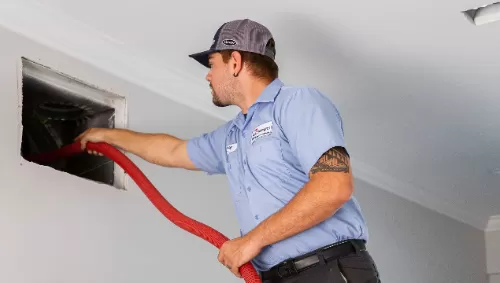Solar Grants Make Home Systems Affordable
For decades, the high upfront cost of home solar systems kept renewable energy out of reach for many American households. Today, federal and state-funded solar grants are rewriting this narrative, transforming rooftop panels from luxury upgrades into practical investments. With programs available across all 50 states, installing a home solar system has never been more accessible—or more financially rewarding.
Related searches
Quote For Solar Panel Installation

Solar Panels Contractor

Residential Solar Installation

Solar Installation Companies

Solar Panel Commercial Installation

Solar Roof Installation


Why Home Solar Systems Are Now Within Reach
The Inflation Reduction Act (IRA), signed into law in 2022, supercharged solar adoption by extending the federal Investment Tax Credit (ITC) through 2032. Homeowners can claim 30% of their home solar system costs as a tax credit, directly reducing what they owe the IRS. For example, a $20,000 installation becomes $14,000 after applying the ITC. But the savings don’t stop there. Many states layer additional incentives on top of federal programs. In New York, the NY-Sun initiative offers cash rebates up to $5,000 for qualifying home solar systems, while California’s Self-Generation Incentive Program (SGIP) provides battery storage grants to maximize solar energy use.
Breaking Down Solar Grant Opportunities
1. Federal Tax Credits
The IRA’s ITC remains the cornerstone of home solar affordability. Unlike deductions, which reduce taxable income, this credit provides a dollar-for-dollar reduction in tax liability. Even if your credit exceeds what you owe, the remaining amount rolls over to future tax years.
2. State-Level Rebates
States like Massachusetts and Texas offer upfront rebates to lower installation costs. Massachusetts’ Solar Loan Program, for instance, pairs low-interest loans with rebates that cover up to 30% of a home solar system’s price tag.
3. Local Utility Incentives
Many utility companies reward customers who adopt home solar systems. In Arizona, Tucson Electric Power provides a one-time $500 rebate, while Georgia Power offers net metering programs that let homeowners sell excess solar energy back to the grid.
4. Income-Based Grants
Low- to moderate-income households qualify for extra support. The U.S. Department of Energy’s Solar Energy Technologies Office funds projects like Illinois’ Solar for All, which covers 100% of home solar system costs for eligible families.
How to Secure Solar Grants for Your Home
The application process for home solar system grants varies by program but generally follows three steps:
Audit Your Eligibility: Use tools like the Database of State Incentives for Renewables & Efficiency (DSIRE) to identify grants matching your location, income, and energy needs.
Choose an Approved Installer: Most programs require using certified professionals. For example, Energy Star-qualified installers ensure your home solar system meets federal efficiency standards.
Submit Documentation: Keep receipts, contractor agreements, and system specifications. Many states, like New Jersey, require proof of installation completion before releasing rebate funds.
Real-World Impact: Families Powering Savings
Take the case of the Harrisons, a retired couple in Florida. By combining the federal ITC with Florida’s Solar and CHP Rebate Program, they installed a 6 kW home solar system for $11,000—down from $18,000. Their monthly electric bills dropped from $150 to $25, and the system paid for itself in under seven years.
Similarly, Colorado’s Renewable Energy Rebate Program helped the Nguyen family in Denver offset 50% of their home solar system costs. With a Tesla Powerwall battery added through state grants, they now enjoy uninterrupted power during frequent winter outages.
Avoiding Common Pitfalls
While grants simplify affordability, homeowners should:
Beware of Scams: Only use contractors vetted by state programs or the Solar Energy Industries Association (SEIA).
Plan for Maintenance: Most home solar systems require minimal upkeep, but grants rarely cover repairs. Budget $150–$300 annually for professional inspections.
Check HOA Rules: Some homeowner associations restrict panel placement. Fortunately, 35 states have laws prohibiting HOAs from banning home solar systems outright.
The Future of Home Energy
Solar grants aren’t just about individual savings—they’re reshaping America’s energy landscape. The average home solar system offsets 7–10 tons of carbon emissions annually, equivalent to planting 120 trees. With programs continually expanding, now is the time to explore how solar incentives can light up your home while keeping costs grounded.
 Simplifying Your Shipping and Stamps with Auctane and USPS Services
Simplifying Your Shipping and Stamps with Auctane and USPS Services 5 Steps for Effective Water Extraction: Protect Your Home from Water Damage
5 Steps for Effective Water Extraction: Protect Your Home from Water Damage Keeping Your Drains Clear: A Comprehensive Guide to Drain Cleaning Solutions
Keeping Your Drains Clear: A Comprehensive Guide to Drain Cleaning Solutions The Ultimate Guide to Duct Cleaning Services in 2025
The Ultimate Guide to Duct Cleaning Services in 2025 Exploring Affordable Luxury Senior Living in Greenwood Village
Exploring Affordable Luxury Senior Living in Greenwood Village
